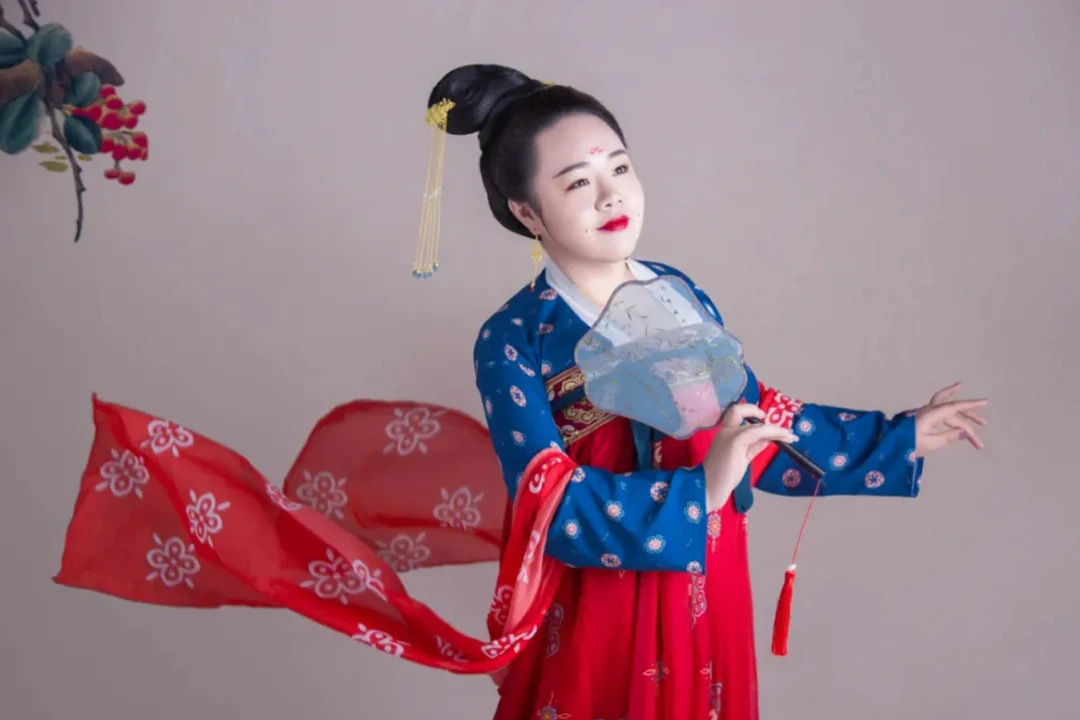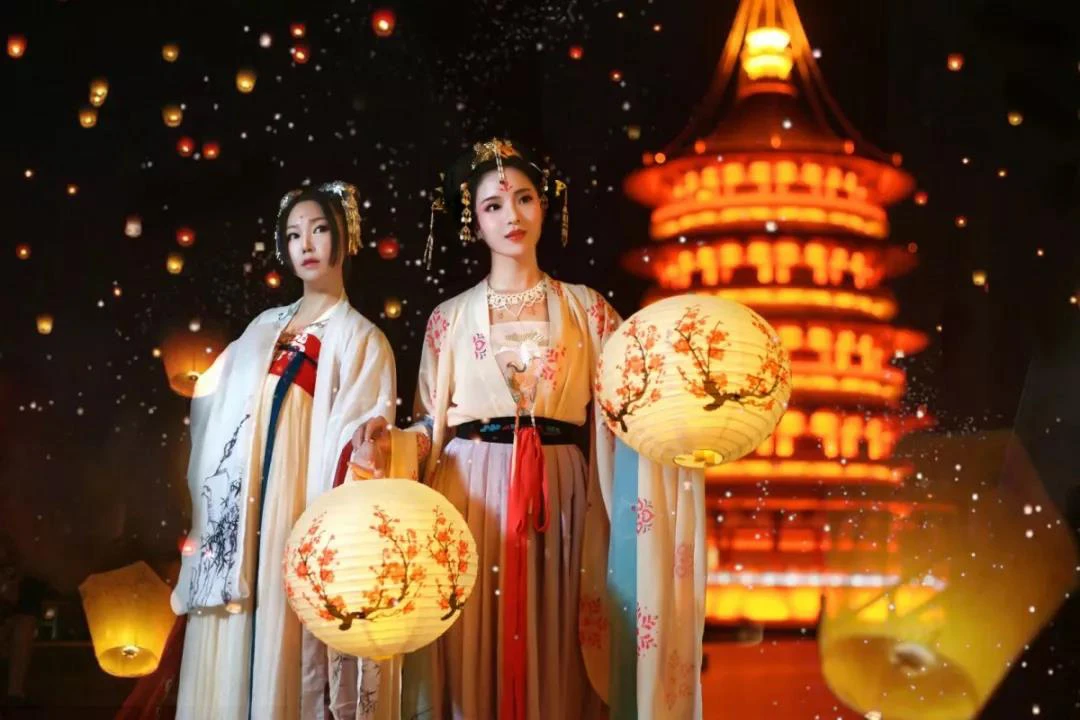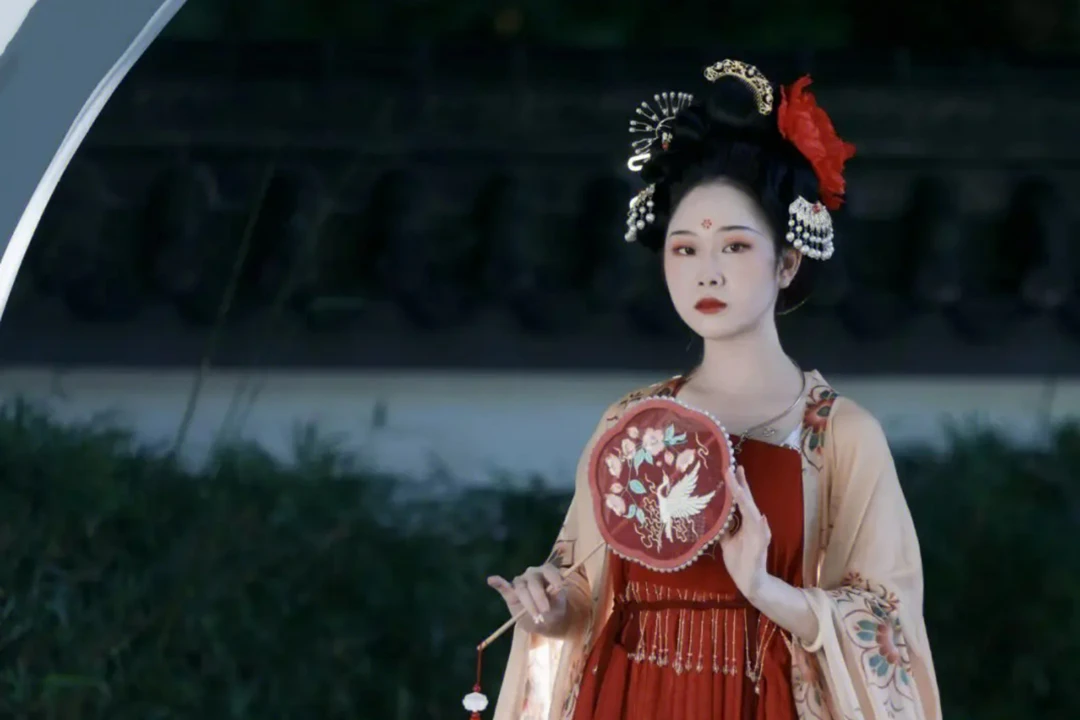The Tang Dynasty, which reigned over China more than 1,400 years ago, marked a golden age in Chinese history, not only in terms of its political and economic prosperity but also in its cultural and artistic achievements. Among the many legacies of this era, the women’s clothing of the Tang Dynasty stands out as a testament to the creativity, elegance, and diversity of Chinese fashion.
Unlike the more austere and simple styles of the preceding Han Dynasty, Tang Dynasty women’s clothing was characterized by its rich colors, intricate patterns, and luxurious fabrics. The use of vibrant hues such as deep red, green, and purple, along with the incorporation of gold and silver thread embroidery, created a sense of opulence and grandeur that reflected the confidence and prosperity of the Tang Empire.
One of the most distinctive features of Tang Dynasty women’s clothing was the “ruqun,” a two-piece garment consisting of a short jacket and a long skirt. The jacket was typically made of silk and featured wide sleeves and a high collar. The skirt was also made of silk and was often adorned with intricate patterns and designs. The “ruqun” was worn by women of all social classes, from the empress to the common folk, and could be adapted to suit different occasions and seasons.
Another popular style of Tang Dynasty women’s clothing was the “hufu,” or “barbarian clothing,” which was influenced by the fashions of the nomadic tribes that bordered the Tang Empire. The “hufu” consisted of a long robe with a round collar and narrow sleeves, which was worn with trousers and boots. This style was particularly popular among the aristocratic women who enjoyed horseback riding and other outdoor activities.
In addition to the “ruqun” and “hufu,” Tang Dynasty women also wore a variety of other garments, such as the long vest worn over the “ruqun,” and the “pibo,” a type of shawl or cape that could be draped over the shoulders. These garments were often made of luxurious fabrics such as silk, satin, and brocade, and were decorated with intricate embroidery, painting, and dyeing techniques.
The hairstyles and accessories worn by Tang Dynasty women were equally elaborate and varied. Women often wore their hair in high buns or topknots, which were adorned with ornate hairpins, combs, and other decorative items made of gold, silver, jade, and other precious materials. They also wore a variety of jewelry, including earrings, necklaces, bracelets, and rings, which were often made of gold and silver and inlaid with precious stones.
The beauty and sophistication of Tang Dynasty women’s clothing were not only a reflection of the wealth and power of the empire but also a testament to the creativity and skill of the artisans who designed and crafted these garments. The intricate patterns and designs, the use of luxurious fabrics and materials, and the attention to detail in every aspect of the clothing, from the cut and fit to the embellishments and accessories, all spoke to the high level of craftsmanship and artistry that characterized Tang Dynasty fashion.
Moreover, the diversity and inclusivity of Tang Dynasty women’s clothing, which incorporated elements from different cultures and regions, reflected the cosmopolitan nature of the Tang Empire. As a major center of trade and cultural exchange, the Tang Dynasty was a melting pot of different ethnicities, religions, and traditions, and this diversity was reflected in the clothing worn by its women.
The influence of Tang Dynasty women’s clothing extended far beyond the borders of the empire, and its legacy can still be seen in the traditional clothing of many Asian countries today. In Japan, for example, the “kimono” is believed to have evolved from the “ruqun” of the Tang Dynasty, while in Korea, the “hanbok” bears many similarities to the “hufu” worn by Tang Dynasty women.
Even in modern times, the beauty and elegance of Tang Dynasty women’s clothing continue to inspire fashion designers and artists around the world. Many contemporary Chinese fashion designers have drawn on the rich heritage of Tang Dynasty clothing to create modern interpretations of traditional styles, incorporating elements such as the high collar, wide sleeves, and intricate embroidery into their designs.
Beyond its aesthetic appeal, however, the significance of Tang Dynasty women’s clothing lies in what it reveals about the values, beliefs, and social norms of the time. The emphasis on luxury, refinement, and beauty in Tang Dynasty fashion reflects a society that valued art, culture, and sophistication, and that saw clothing as a means of expressing one’s social status and personal identity.
At the same time, the diversity and inclusivity of Tang Dynasty women’s clothing, which drew on influences from different cultures and regions, speaks to a society that was open, tolerant, and cosmopolitan. The Tang Dynasty was a time of great cultural exchange and cross-pollination, and this is reflected in the clothing worn by its women, which incorporated elements from Central Asia, Persia, and even as far away as Europe.
In this sense, the beauty of Tang Dynasty women’s clothing is not just skin-deep, but is a reflection of the deeper values and ideals that shaped Chinese society during this golden age of its history. It is a testament to the creativity, skill, and artistry of the Chinese people, and to their ability to create works of enduring beauty and significance that continue to inspire and captivate us to this day.
As we look back on the legacy of Tang Dynasty women’s clothing, we are reminded of the richness and diversity of Chinese culture, and of the enduring power of fashion to express our identities, values, and aspirations. Whether we are admiring the intricate embroidery of a “ruqun” or the flowing lines of a “hufu,” we are not just appreciating a piece of clothing, but are engaging with a cultural heritage that spans centuries and continents.
In a world that is increasingly globalized and interconnected, the beauty and significance of traditional clothing like that of the Tang Dynasty women take on new meaning and relevance. They remind us of the importance of preserving and celebrating our cultural heritage, and of the ways in which fashion can serve as a bridge between different cultures and traditions.
As we move forward into the future, let us draw inspiration from the beauty and elegance of Tang Dynasty women’s clothing, and let us strive to create a world in which diversity, creativity, and cultural exchange are valued and celebrated. For in doing so, we not only honor the legacy of the past but also lay the foundation for a more beautiful and harmonious future.



